Insulation Basics: What to Know About Spray Foam
While we all wish there were a single answer for any given problem, oftentimes that’s just not the case. This is true for material options for home insulation. Despite what the market says is the most popular insulation material or method at any given moment, the truth is that each individual project has its own set of circumstances that call for a recommended set of options. And within those options, the specifications and installation can have a massive impact on the result.
It’s important to understand each material and how it works within your home’s construction and the environment in which you live. In this new series, we’ll take a look at various thermal insulation types and materials to help you figure out which is the best one for your project.
We’ll begin with spray polyurethane foam (SPF), which, at least in North America, is fast becoming one of the most popular options.
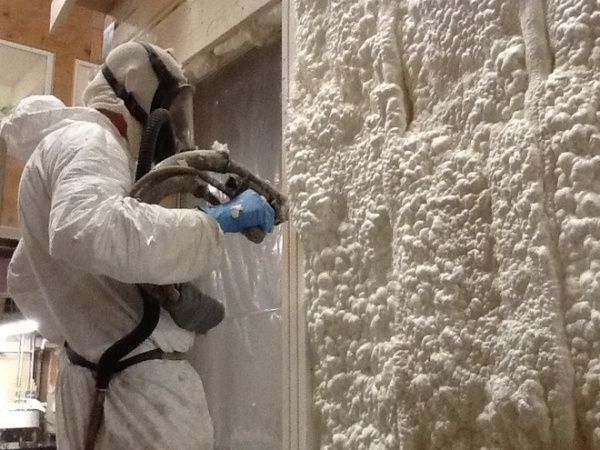
What is SPF? Spray polyurethane foam is a heat-activated polymer that is just what it sounds like, a foam insulation that is sprayed into place. It is made by mixing two ingredients onsite using special equipment. The mixture is then sprayed through a heated hose onto the surface that needs to be insulated. As the chemical reaction between the two ingredients takes place and the substance heats up in the hose, the liquid turns foamy, expands and then eventually hardens in place.
Closed-cell and open-cell spray foam. These are the two kinds of spray-foam insulation. Open-cell SPF is the lighter, less dense option; it is the cheaper of the two but has less insulating power (or a lower R-value). Closed-cell SPF is denser and more expensive, can provide a bit more rigid support to certain structures and can act as a water vapor barrier, because it is less permeable.
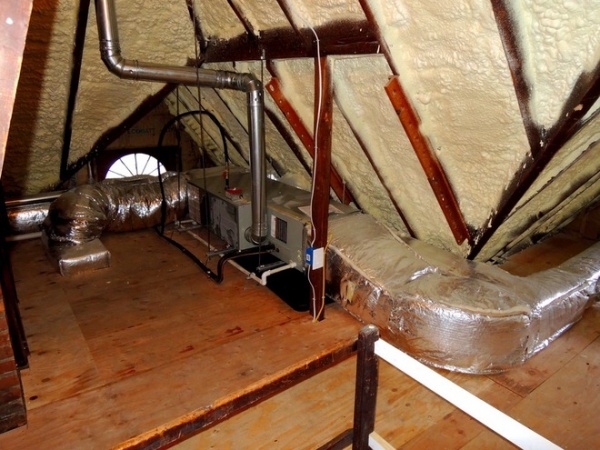
Why is SPF so popular in the United States? Spray foam has the potential to tackle air leakages better than many other insulation options. Because it is sprayed into place, the foam can fill up cavities and block any small holes that could compromise your building envelope. It can be applied to vertical or horizontal surfaces to act not only as thermal insulation, but also as an air barrier. It’s synthetic and does not attract rodents or insects. When applied properly, spray foam can contribute to a successful energy-efficiency strategy.
As with many aspects of the building market, there are variations in what is considered common around the world. Here in Italy, for example, spray-foam insulation has not taken hold of the market as it has in the U.S., for a variety of reasons outside the scope of this ideabook. As a result, it is more difficult to find installers here, although there are versions of SPF available on the European market.
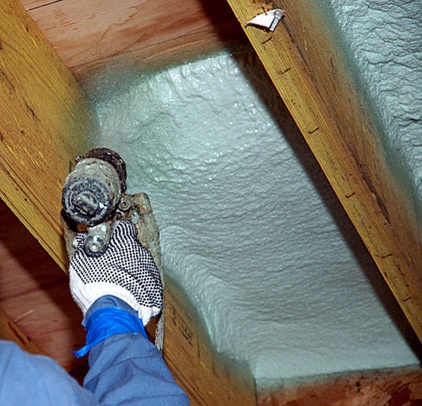
Relative ease of installation. This makes it a popular choice for contractors (although see my notes on installation difficulties below). Plus, even though it can be expensive, its relatively high R-value per inch makes it a competitive option. It’s particularly interesting for renovation projects where traditional batt or board insulation may be difficult to insert. With spray foam (as with blown-in insulation), it’s possible to inject the insulation into a wall cavity, for example, or apply it to a sloped surface.
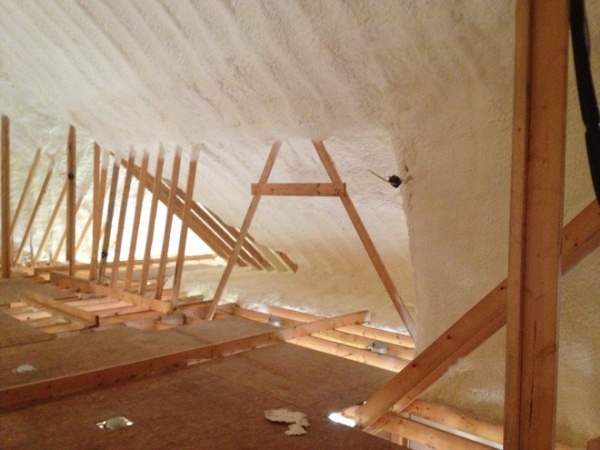

Challenges of installation. As with many building technology solutions, the increasing popularity of a product or method means an increase in misuse and misunderstandings. Unfortunately, nowadays it is quite common to find examples of spray-foam insulation that have been specified or installed incorrectly.
The most common problems with spray-foam applications are:The chemicals were not mixed correctly, and the foam starts to pull away from the neighboring surfaceThe chemicals were not mixed correctly, causing lingering odors and health problems for the occupantsThe installers rush through the installation, leaving gaps and holes that reduce the efficiency of the productA sufficient thickness either was not specified or was not executed as specified during installationThe local climate was not taken into consideration, and the temperatures or humidity levels were outside of the manufacturer’s specificationsIn cold climates a vapor barrier was not installed over the spray foam, sometimes causing roof rotRemember, installation is a key factor with any kind of insulation you chose and can be the difference between insulation that works or causes problems.
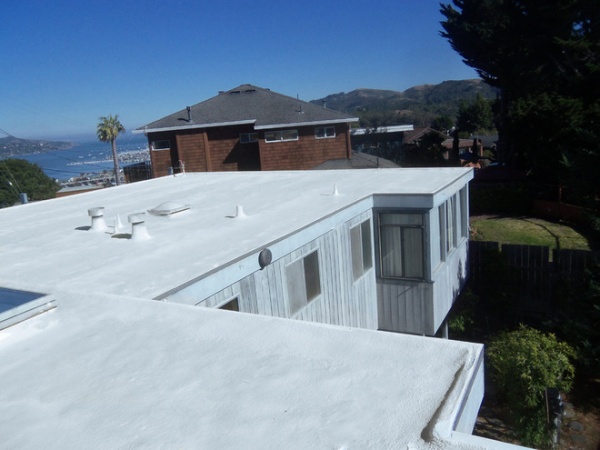
Be aware of greenwash! Closed-cell spray foam in particular, which uses HFCs with high carbon dioxide content, has a very negative impact on global warming. Some manufacturers are claiming that their spray foam is ecologically friendly because it is based on soy or castor. Don’t be fooled by this marketing gimmick. The percentage of soy legally required for them to be able to make this claim is very low. SPF is still very much a fossil-fuel-based material (as are many other insulation options).
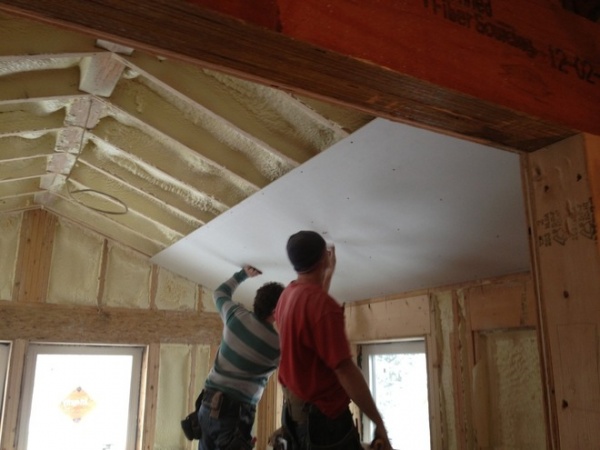
Consider your climate. There are too many climate-specific considerations for insulation to include in this ideabook. With SPF, for example, a vapor retarder layer over drywall may be required when using open-cell spray foam (seen here) in cold climates.
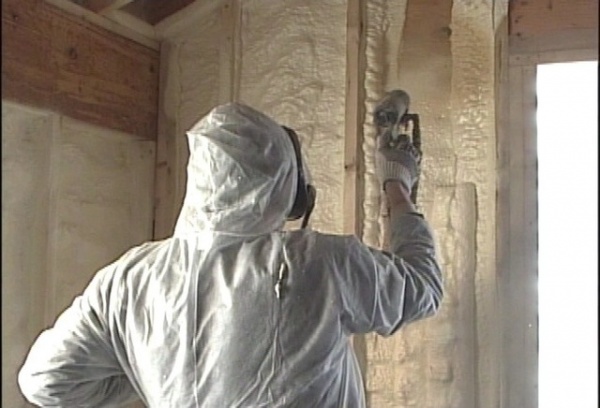
Potential health risks. Some people have reported health reactions to the lingering odor than can occur with certain mixes of chemicals, and the Environmental Protection Agency has issued information to make consumers aware of potential health risks, particularly during installation. There is still very little known about the off-gassing potential of this relatively new product, but a standard has been developed to start monitoring it.
It is absolutely essential that anyone working on the construction or renovation of a home using SPF follow the recommended health guidelines. Please don’t think that you can install this in your shorts and T-shirt on the weekend. Consult a professional or do your research.
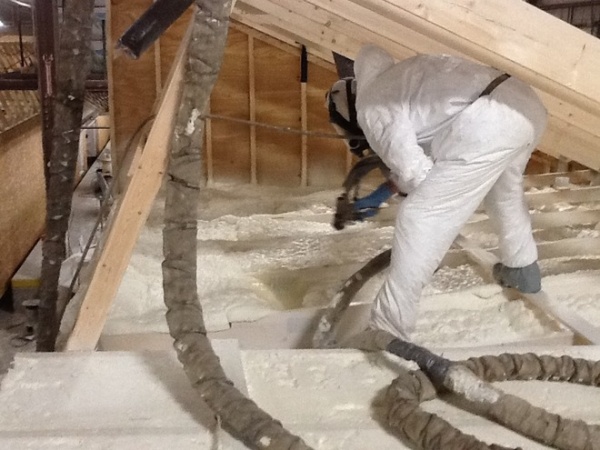
The good news. Learning the pitfalls is just part of being more aware about the consequences of a certain decision. Each and every insulation material has advantages and disadvantages. SPF is a viable solution for certain homes and can offer substantial energy savings if installed correctly. You just need to be aware that, relative to other materials, the installation can be easier to execute but also easier to rush through. Knowing what questions to ask your installer can go a long way toward obtaining optimal results.
Tips for working with an installer:
Hire someone reputable with verified recommendations.Make sure the work is monitored by someone other than the installer.Do a quality control check before issuing final payment.
Your turn: Do you have SPF in your home? What kind of energy savings have you seen? Please be sure to indicate your geographic region when sharing info in the Comments.
More Insulation Basics: Heat, R-Value and the Building Envelope












